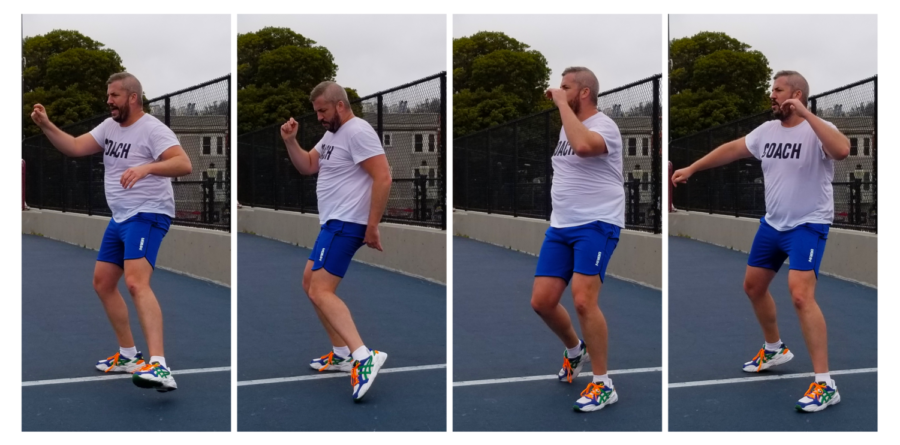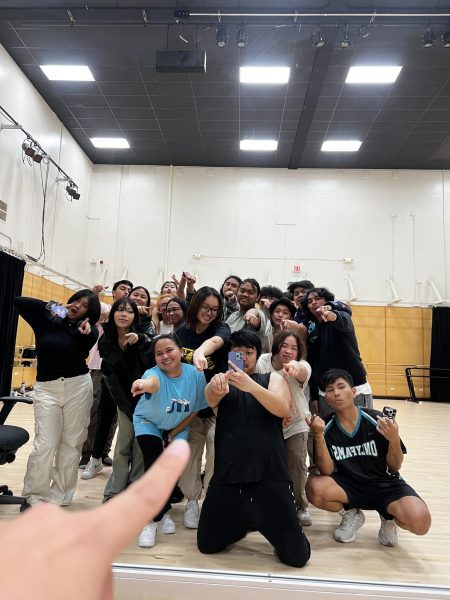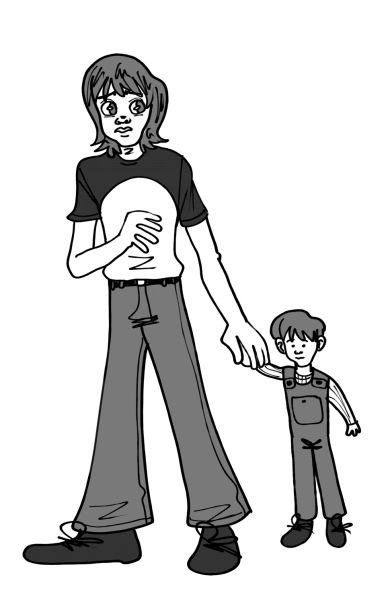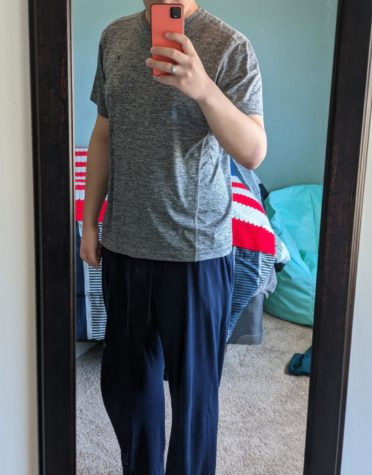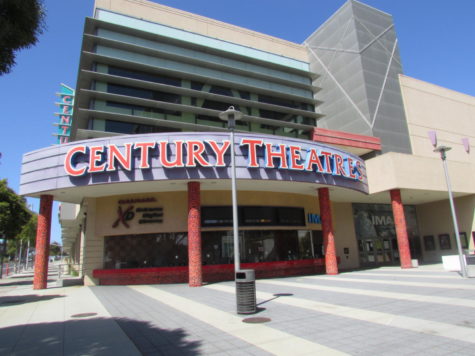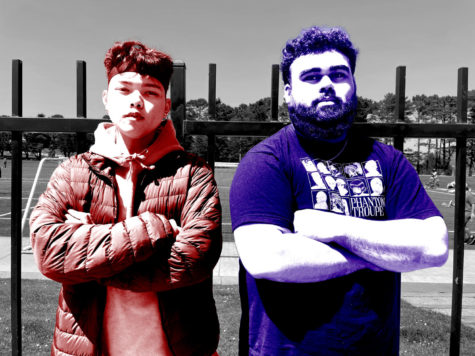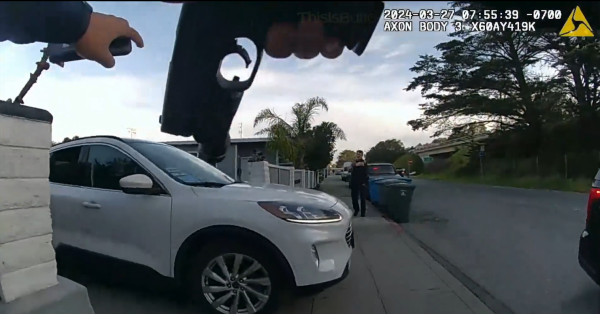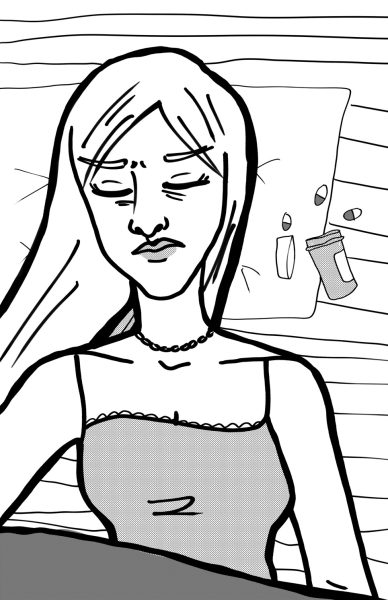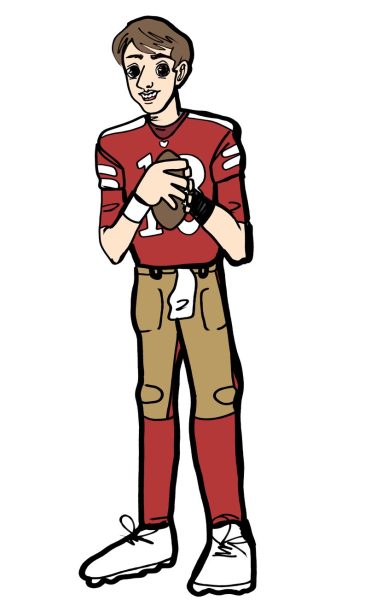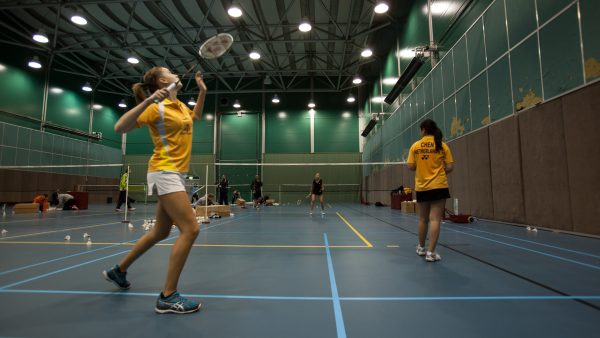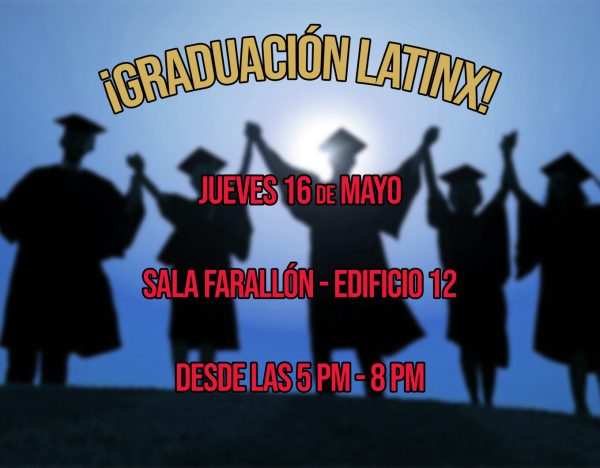Dancing With Myself
Rory Davis holds both in-person and online follow-in-the-moment aerobic dance classes, which he calls Roryography.
It’s a sunny day at Dolores Park in San Francisco’s Mission District.
Spread out in rows on the roller hockey court are a group of people bedecked in a colorful array of spandex and sweatbands. The echoes of their laughter mingle with the familiar sounds of the Saturday park crowd: skateboarders grinding the rails and cursing their inevitable betrayal at the hands of gravity, day drinkers chatting about their day jobs, children playing at the nearby playground.
Cutting through the noise, the opening drums to Hot Lunch Jam from the musical Fame bring the dancers to attention. Standing at the front of the class with a chain link fence behind him, Rory Davis shifts from side to side with alternating arms extending upward in a reaching motion. The class follows suit.
He calls it Roryography.
“This dance class that I started teaching about four years ago called Roryography was very much in the spirit of a Richard Simmons VHS tape, and was intended for friends of mine that aren’t really professional dancers and/or performers,” Davis said. “It was just an excuse for us to kind of have some fun and party together and dance and feel good. The first time that I threw this party, about a hundred-or-so people showed up. There were grandchildren with their grandparents, people came in full drag costuming, all ages. Everybody you can picture was all there, and it was just this great overwhelming response to the whole thing.”
It wasn’t long before his dance party grew into a weekly class at ODC Dance Commons. That is, until COVID-19 came along.
“About a year ago all of that stopped dead in its tracks,” Davis said. “So, I continued doing the class online on this strange little thing called Zoom that no one had really heard of, and luckily for me the follow-in-the-moment exercise aerobics schtick worked in the 80s for Jane Fonda and Richard Simmons, and it still very much works now.”
This strange little thing called Zoom
At Skyline College, our own dance program has charted similarly unknown territory with the shift to distance learning over the past year. Amber Steele, who heads the dance department, described her experience over a Zoom call from her in-home studio where she teaches.
“The short answer is, it sucked for everybody,” Steele said. “I’m super privileged in many ways. One thing is that I’m married to a video specialist, so that’s how we have this fabulous ring light over here, and a nice brightly lit white room with a ton of lighting. I’m just so grateful that I’m able to have a place. When we first went to shelter-in-place, I was teaching in our living room. … Everybody else was taking class in their living room or their bedrooms.”
When it comes to dancing at home, sometimes the most inconsequential thing can make all the difference in the world. Like carpets.
“It’s nice that I don’t have carpets,” Steele said. “So I try to remember that for all of my students turning — It’s kind of out because most people are on carpet. Turns are terrible on carpet. In my movement classes that I used to teach in person, I’m skipping most turns or turning a single turn. I think my first semester when we went into shelter-in-place, I had a jazz class that was running. So in this jazz class, I spent all this time going across the studio floor — Run, run, leap! Step, leap! Step, leap! Step, leap! Nobody’s doing that in their bedroom. So I had to take all of our dance instructions and make them all in-place, which is… yeah.”
Rory Davis also faced some challenges adapting his choreography after moving his classes online.
“I had to modify a lot, because a lot of my dances were playing with space and interacting with people,” he said. “When the Dolly Parton hoe-down song comes on, guess what? We’re not doing the interactive hoe-down elements anymore. I had to think on my feet choreographically as well to keep that sense of joy that a Roryography class has while keeping people away from one another, which is such a big element of it.”
The lens vs. the mirror
Steele observed how the introduction of the camera can be problematic for some students.
“When we first started, everybody who could just showed up on Zoom and tried to make do and I think folks still don’t know that you can — Well, most of us on Zoom have our cameras on and are seeing ourselves,” she said. “You don’t have to, by the way. You can tell Zoom to not show you your own video. I feel like fewer and fewer and fewer and fewer and fewer students are willing to turn on their camera during Zoom. And, as a point of equity, our district has decided that it is not okay to require a student to turn on their camera. Because a student might not want to show their classmates where they live. The hardest thing about transitioning to online is that because we’re on video and so many people are experiencing being on camera so much more, there’s this whole additional layer that I wish I could take away for people.”
She added that there’s a difference between using the camera to adjust your placement or movement and harshly criticizing yourself.
“Learning to see and make alignment adjustments while watching yourself is a healthy and constructive practice and very useful, and we all have to learn to identify, snatch, and throw out that angry monkey of negativity in your mind,” she said.
Rory Davis believes the camera presents its own challenges but is generally good for people who want to cut a rug.
“There’s the subtraction of the mirror, which always makes people self-conscious,” Davis said. “But then there’s the addition of the camera, which could be even worse for people. I say every time when I teach my class that the biggest thing that you have to deal with is yourself. It’s always your own ego — You’re so worried about how you look, you’re so worried about what other people are thinking of you. But then when you think about your personal experience in the class, you’re so focused on what the teacher is doing and what you yourself look like that you don’t even notice who’s standing next to you. So I think that the experience of people just being by themselves at home with their laptops did sort of loosen people up.”
The new normal
San Mateo County recently entered the so-called “yellow tier”, which allows for some looser restrictions on safety measures involving COVID-19. The CDC also said that fully vaccinated people can meet in public without masks. With Skyline College cautiously looking toward fully reopening at the beginning of 2022, Steele remains hopeful that some form of normalcy may return sooner rather than later.
“The bet is that if we schedule online people will be able to make plans to attend, and in the Summer I think things are just going to go how they go,” she said. “That looks pretty much like what we expected. In the fall, maybe we could come back to life.”
Her jazz class, which she suspects may be one of the first classes to resume in-class activities in the fall, has some improvements to look forward to upon their return.
“While we are out of the dance studio this summer, they are replacing our dance floor with a professional harlequin sprung dance floor,” she said. “This is like what Alvin Ailey Dance Theater uses in New York City. It’s, like, the poshest, most amazing thing.”
But for Davis, he’s trying to find a way to have his cake and eat it too.
“Funny enough, even now with the vaccines coming out and with people being able to return, my mindset is like, ‘How do I get back into the way it was before, but maybe with the improvement of the people I have met online through Zoom, like, the international connections?’” he said. “‘How do I keep that going?’ So that’s my next phase: what I was doing before a little over a year ago, but I’m hanging on to the survival tactics I learned last year as well.”



